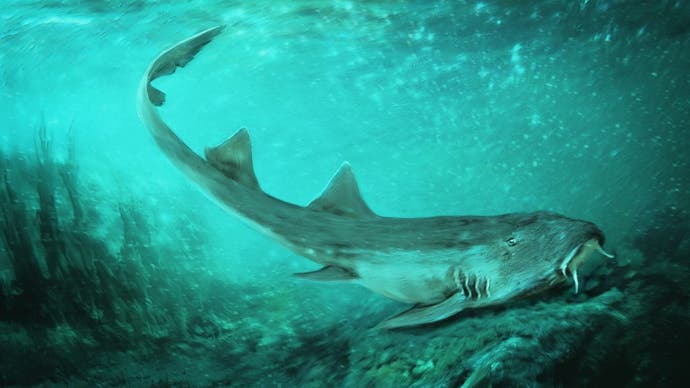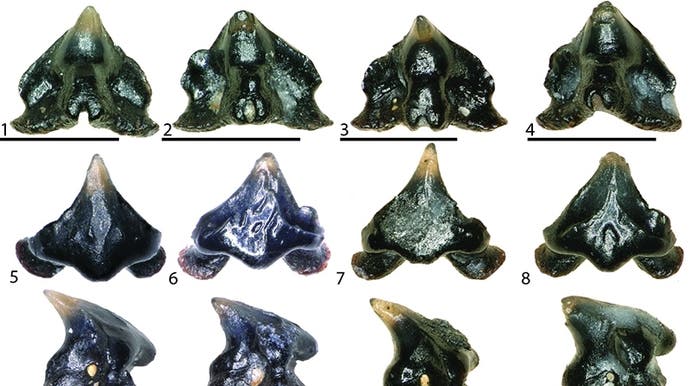Ancient shark named after Galaga because its teeth look like the iconic video game spaceship
Bleep blue sea.
Scientists have named a newly-discovered ancient shark after Galaga because its teeth look like the spacefighter from the iconic 1981 arcade game.
The story behind the discovery of Galagadon nordquistae, a shark from South Dakota circa 67m years ago, is pretty cool. Galagadon's tiny teeth (the shark itself was only approximately 12 to 18 inches long) were found in the sediment left behind when palaeontologists uncovered the bones of Sue, the most complete T. rex fossil in the world. They sifted through the almost two tonnes of dirt and found over two dozen teeth belonging to the new shark species.


Terry Gates, lecturer at NC State University, was lead author of the paper describing the new species that appeared in the Journal of Paleontology recently. "The more we discover about the Cretaceous period just before the non-bird dinosaurs went extinct, the more fantastic that world becomes," Gates said in a note released on the NC State University website.
"It may seem odd today, but about 67m years ago, what is now South Dakota was covered in forests, swamps and winding rivers. Galagadon was not swooping in to prey on T. rex, Triceratops, or any other dinosaurs that happened into its streams. This shark had teeth that were good for catching small fish or crushing snails and crawdads."

Gates credits the idea for Galagadon's name to middle school teacher Nate Bourne, who worked alongside Gates at the NC Museum of Natural Sciences. The nordquistae part of the name comes from volunteer Karen Nordquist, who helped Gates sift through the dirt.
There's no word on whether Galagadon could fire laser beams from its eyes, though.


